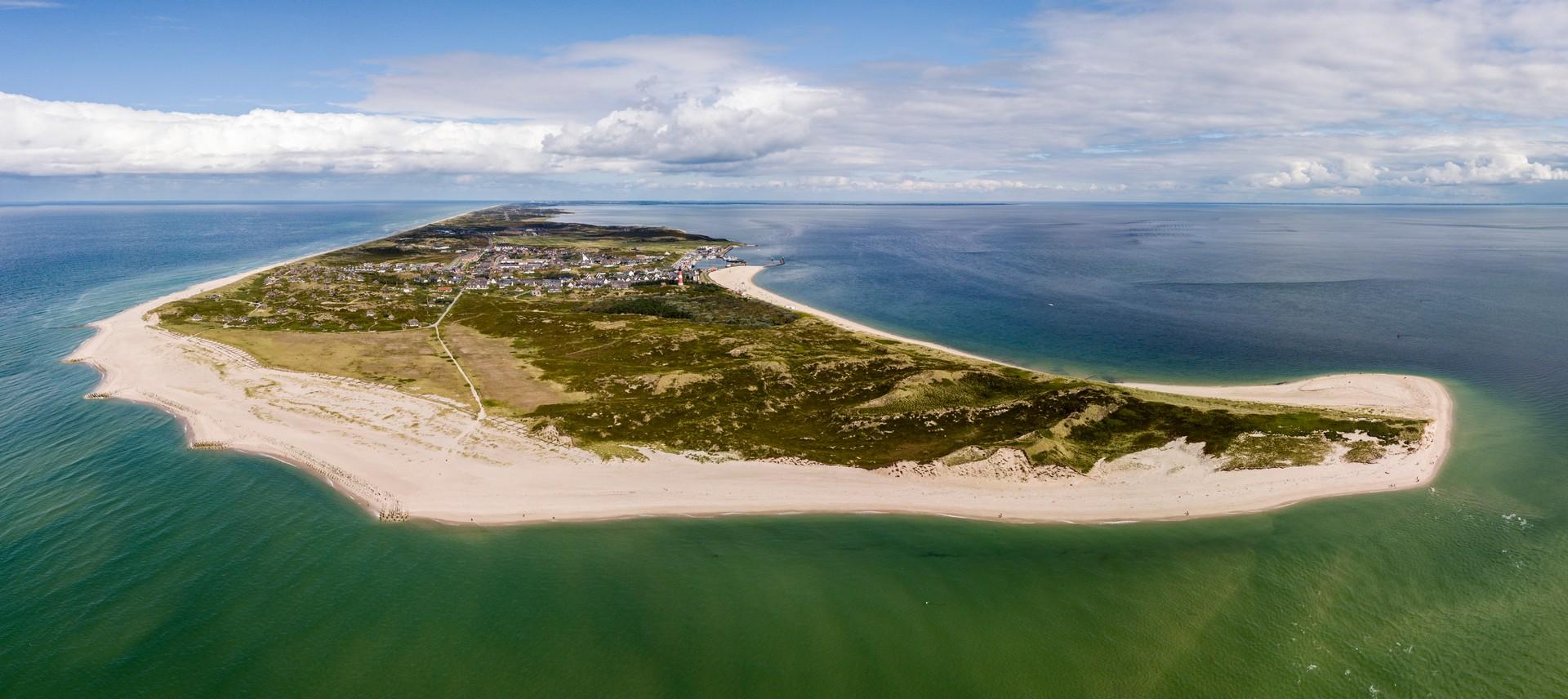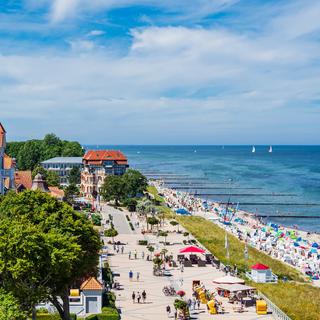
Sylt weather and climate in 2025

Sylt weather and climate in 2025
Day
4 °C
Night
0 °C
Sea
4 °C
Precipitation
63 mm
in month
Rainy days
13 days
in month
Daylight
8 hours
average
Sunshine
1 hours
average
Humidity
92 %
Weather charts for Sylt
Destinations nearby and activities
Destinations nearby
Activities in Sylt

Find more destinations like this
Destinations with similar weather to Sylt
Other destinations in Germany - North coast
Closest cities for Sylt
Last week's weather in Sylt
Average daily temperature during the week of 15 December 2025 - 21 December 2025 was 9 °C (48 °F), average minimal (night) temperature was 6 °C (43 °F). Both the daily and night temperatures in Sylt are above the long-term average, which is around 5 °C (41 °F) and 1 °C (34 °F) respectively. The coldest day of the week was Sunday in the end of the week. On average, the temperatures during various times of day (in local time) were recorded as: 7am 8 °C (46 °F), 10am 8 °C (46 °F), 1pm 8 °C (46 °F), 4pm 7 °C (45 °F), 7pm 7 °C (45 °F), 10pm 7 °C (45 °F).
There were 3 days without rain and 4 days with light rain during this week. Sylt received 19 mm (0.75 in) of precipitation throughout the week, which is roughly same as its long-term average of 16 mm (0.63 in). During the daytime (from dawn to dusk), there was 76 % cloud coverage on average. There was a meteorological observation of fog and mist.
An average wind speed of 6.2 m/s was recorded. The most common wind direction(s) were South-West and South. The air pressure was 1007 hpa - 1018 hpa. The air in Sylt had an average humidity of 93 %.
On average, there were 1.5 hours clear skies, 0.5 hours partially overcast skies, 6 hours overcast skies and 0.5 hours rainy weather during the daytime (from dawn to dusk). At 08:47, on average, the sun rose, and at 15:59, the sun set.
Weather overview for Sylt
Weather overview
Sylt, situated in Germany, boasts a temperate climate with average daytime temperatures ranging from 4 °C (39 °F) in the coldest months to a pleasant 20 °C (68 °F) during the peak of summer. The highest sea temperatures are in August, reaching up to 18 °C (64 °F), while the lowest are in February, dropping to a chilly 3 °C (37 °F). The lightest rainfall occurs in April, with only 9 days characterized by precipitation; conversely, November is the wettest month, featuring 14 days of rain. Nighttime temperatures span from a freezing 0 °C (32 °F) in February to a mild 14 °C (58 °F) in August. This climatic summary includes metrics such as temperature, precipitation, wind speed, humidity, sunny and wet days, all given in various units including degrees, meters per second, and percents.
January weather
In Sylt, the daytime temperatures reach their minimum while the sea temperature continues to decrease, standing at 4 °C (39 °F). The decrease in rainfall is discernible, amounting to 63 mm (2.48 in), and the frequency of rainy days also shows a slight drop to 13 days. Concurrently, a decline in nighttime temperatures is noted, registering at 0 °C (32 °F). Moreover, the wind speed peaks at 8 m/s.
February weather
In this month, Sylt reaches the lowest sea temperature with a value of 3 °C (37 °F), and the minimum of nightly temperatures is discernible. The count of rainy days persists in its decline, resting at 10 days, and rainfall also demonstrates a decrease, accumulating 45 mm (1.77 in). The emergence of sunnier hours is noted, with an average of 2 hours per day.
March weather
With the arrival of March in Sylt, there's a noticeable rise in daytime temperatures reaching 6 °C (43 °F), while sea temperatures exhibit a similar upward trend. An increase in sunlit hours marks the onset of spring, now accounting for 3 hours. The start of a rise in nighttime temperatures is also apparent, with temperatures now reaching 2 °C (35 °F).
April weather
April in Sylt is characterized by the continued ascent of sea temperatures to 7 °C (44 °F), paralleled by rising daytime temperatures of 11 °C (51 °F). The frequency of rainy days bottoms out, reporting a mere 9 days, while the amount of rainfall also hits its low point with 35 mm (1.37 in). An increase in nighttime warmth is also observed, in addition to the augmentation of sunlit hours, which now reach 5 hours per day.
May weather
May in Sylt witnesses ongoing increases in both day and sea temperatures, which are documented at 11 °C (51 °F) and 11 °C (51 °F) respectively. There's a noticeable uptick in rainfall, totaling 45 mm (1.75 in), while night temperatures continue their upward trajectory as well, registering 8 °C (47 °F). The peak in cloudless sky hours is captured at 7 hours, alongside the lowest humidity levels experienced.
June weather
June in Sylt is marked by the further warming of daytime temperatures to an average of 17 °C (63 °F), accompanied by an uptick in sea temperatures reaching 14 °C (58 °F). The rainy days begin to multiply, evidenced by the onset of an increase with a total of 59 mm (2.33 in) of precipitation. Nighttime temperatures also maintain their ascendancy, now at 12 °C (53 °F). Meanwhile, daylight hours peak, averaging 17 hours.
July weather
In Sylt, July marks the beginning of the tourist season with the sea temperature rising to 17 °C (62 °F), while daytime temperatures hit their highest for the year. Observations also include an increase in rainy days totaling 11 days and an increment in rainfall reaching 66 mm (2.59 in). Nighttime temperatures continue escalating, now at 14 °C (57 °F).
August weather
Sylt experiences its warmest sea temperatures in August, peaking at 18 °C (64 °F), alongside maximum nightly temperatures of 14 °C (58 °F). The tourists' season progresses, while the climb in precipitation is apparent, now totaling 85 mm (3.36 in), and rainy days also continue their increase to 12 days.
September weather
As Sylt enters September, a downward shift in sea temperatures becomes obvious, now at 16 °C (60 °F), paralleled by the drop in daytime warmth to 17 °C (63 °F). The rainy days gather momentum, adding up to an impressive 14 days. The decline in nighttime temperatures becomes more apparent this month, and sunlight exposure begins to wane.
October weather
October in Sylt continues the trend with the sea temperature reducing to 12 °C (54 °F) and day temperatures also on the decline, posting 13 °C (55 °F). The spike in rainy days persists to 14 days, with rainfall reaching a year's maximum. Nighttime temperatures retain their downward course, and hours of sunlight lessen.
November weather
November in Sylt is characterized by a further drop in daytime temperatures reaching 9 °C (47 °F), and the sea temperature also follows suit, diminishing to 9 °C (47 °F). The number of rainy days hits its peak at 14 days, but rainfall begins to show signs of a decline, accumulating 84 mm (3.32 in). The gradual decrease in hours of available sunlight is also notable, set at 2 hours.
December weather
December in Sylt sees an ongoing reduction in sea temperatures, now at 5 °C (42 °F), as well as a descent in daytime readings, determined at 5 °C (40 °F). Rainy days begin to subside, registering 14 days, while rainfall also experiences a decrease, falling to 70 mm (2.75 in). Nighttime temperatures continue to plummet, and the scant sunlight hours reach their minimum.
FAQs
How does the sea temperature trend in January?
During January, the sea temperature in Sylt continues a downward trend and is measured at 4 °C (39 °F).
What changes occur in the amount of sunshine in February?
February shows an emergence of sunnier periods, with an increase to 2 hours of clear skies daily.
How do the day and sea temperatures shift in March?
March ushers in a warming trend, with day temperatures escalating to 6 °C (43 °F) and a concurrent rise in sea temperatures.
What is notable about the rainfall in April?
April stands out in Sylt for having the least rainfall, with total precipitation recorded at 35 mm (1.37 in) and only 9 days of rain.
What is the humidity trend observed in May?
May records the lowest humidity for the year in Sylt, indicating drier atmospheric conditions.
What is the duration of daytime hours like in June?
The month of June boasts the longest days of the year, providing an average of 17 hours of daylight.
What are the daytime temperatures like in July?
July is notable for witnessing Sylt's peak daytime temperatures, conducive to tourist activities.
How does precipitation change in August?
August sees a substantial increase in rainfall, with totals climbing to 85 mm (3.36 in) and a slight rise in the number of wet days.
What is the pattern of rainy days in September?
September sees a steady surge in the occurrence of rainy days, reflected in 14 days of rain.
What is the trend for sea temperature in October?
October marks the continuation of the sea temperature decrease, dipping to 12 °C (54 °F).
What characterizes the rainfall pattern in November?
November is marked by the highest frequency of rainy days, totaling 14 days, indicative of Sylt's wettest month.
How does the daylight duration change in December?
December brings the shortest days of the year to Sylt, with sunlight hours reaching a minimal average.











